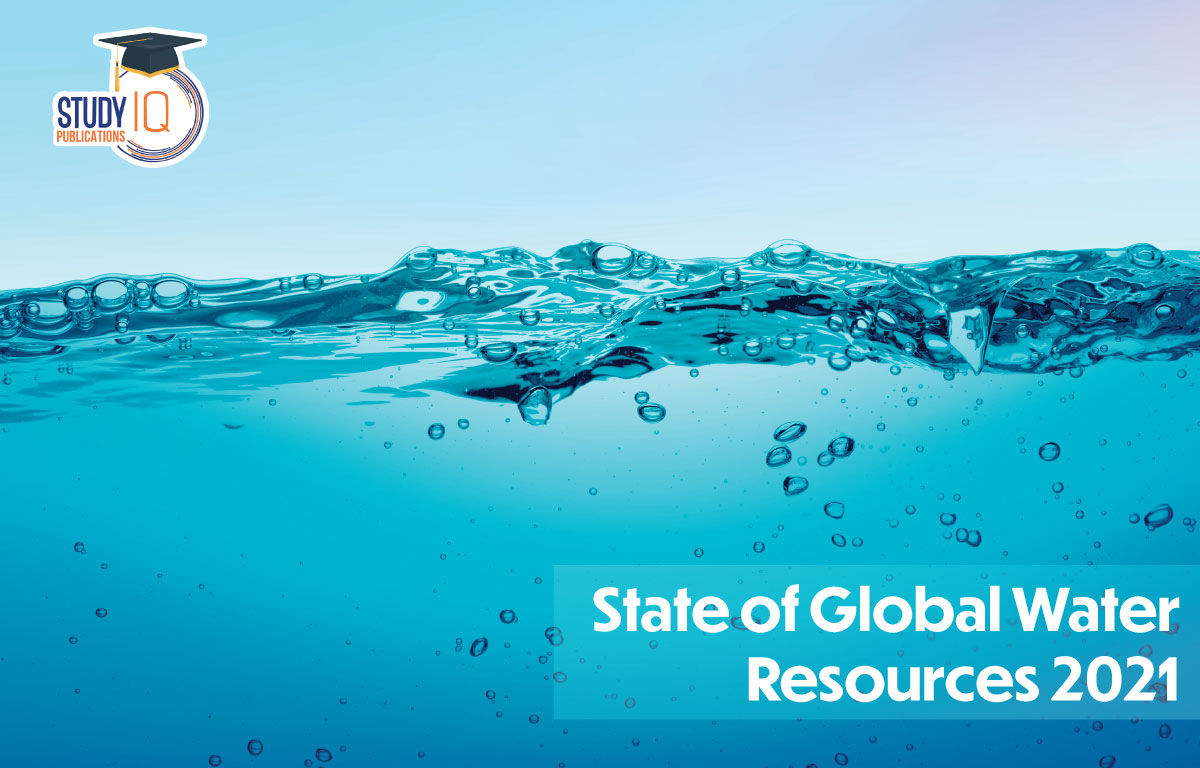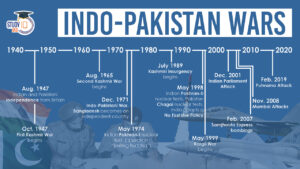Table of Contents
State of Global Water Resources Report 2021
WMO (World Meteorological Organization) is an intergovernmental organization which has released the State of Global Water Resources Report 2021
Global Water Resources Report 2021 assess the effects of climate, environmental and societal change on the Earth’s water resources.
Global Water Resources Annual Report Aim: To support monitoring and management of global freshwater resources in an era of growing demand and limited supplies.
Water Resources Report gives an overview of river flow, as well as major floods and droughts.
It provides insights into hotspots for changes in freshwater storage and highlights the crucial role and vulnerability of the cryosphere (snow and ice).
Findings of Global Water Resources Report 2021
WMO has released the State of Global Water Resources Report 2021 Currently, 3.6 billion people face inadequate access to water at least a month per year and this is expected to increase to more than 5 billion by 2050.
2021 was ranked between the fifth and seventh warmest year on record (not concluded yet) with the global annual mean temperature of 1.11 ± 0.13 degree C above the 1850–1900 pre-industrial average, despite prevailing La Niña conditions.
Climate Change and Water: Impacts of climate change are often felt through water – more intense and frequent droughts, more extreme flooding, more erratic seasonal rainfall and accelerated melting of glaciers – with cascading effects on economies, ecosystems and all aspects of our daily lives.
- Between 2001 and 2018, UN-Water reported that 74% of all natural disasters were water-related.
Focus of Global Water Resources Report
Focusses on three Major Areas
- Streamflow: Volume of water flowing through a river channel at any given time.
- Large areas of the globe recorded dryer than normal conditions in 2021, compared to the average of the 30-year hydrological base period.
- Persistent drought in South and South-East Amazon, and basins in North America including the Colorado, Missouri and Mississippi river basins.
- Ethiopia, Kenya and Somalia have faced several consecutive years with below-average rainfall causing a regional drought.
- Less Discharge by River: In Africa, rivers such as the Niger, Volta, Nile and Congo had less than normal discharge in 2021. Similarly, rivers in parts of Russia, West Siberia and in Central Asia had lower than average discharge in 2021.
- Above Normal River Discharge in some Northern American basins, the North Amazon and Southern Africa (Zambezi and Orange), as well as China (the Amur river basin) and northern India.
- Terrestrial Water Storage (TWS): All water on the land surface and in the sub-surface.
- In 2021, terrestrial water storage was classified as below normal (in comparison to average calculated from 2002-2020) on the West coast of the USA, in the central part of South America and Patagonia, North Africa and Madagascar, Central Asia and the Middle East, Pakistan and North India.
- It was above normal in the central part of Africa, the northern part of South America, specifically the Amazon basin, and the northern part of China.
- Overall, the negative trends are stronger than the positive one
- Hotspots are exacerbated by over-abstraction of groundwater for irrigation.
- The melting of snow and ice also has a significant impact in several areas including Alaska, Patagonia and the Himalayas.
- The cryosphere (frozen water): Cryosphere (glaciers, snow cover, ice caps and, where present, permafrost) is the world’s biggest natural reservoir of freshwater.
- Mountains are often called natural “water towers” because they are the source of rivers and freshwater supplies for an estimated 1.9 billion people.
- Changes to cryosphere water resources affect food security, human health, ecosystem integrity and maintenance, and leads to significant impacts on economic and social development. Such changes also cause hazards such as river flooding and flash floods due to glacier lake outbursts.
- With rising temperatures, the annual glacier run-off typically increases at first, until a turning point, often called ”peak water”, is reached, upon which run-off declines.
La Nina
La Nina refers to the large-scale cooling of the ocean surface temperatures in the central and eastern equatorial Pacific Ocean, coupled with changes in the tropical atmospheric circulation, namely winds, pressure and rainfall.
It usually has the opposite impacts on weather and climate as El Nino, which is the warm phase of the so-called El Niño Southern Oscillation (ENSO).
India Specific Findings of Global Water Resources Annual Report
Worsening impact of Global Warming on the Indo-Gangetic Plain (IGP) that straddles eastern Pakistan, northern India, southern Nepal and the whole of Bangladesh.
Volume of water available in the Ganga and the groundwater in the river-basin have both seen a significant fall between 2002 and 2021.
In India, due to large and medium-scale natural hazard extreme events, there were 762 casualties, with Maharashtra, Karnataka, Andhra Pradesh, Kerala, Madhya Pradesh, West Bengal and Uttarakhand worst impacted.
Global Water Resources Report Recommendations
Sharing Of Hydrological Data: Accelerate the availability and sharing of hydrological data, including river discharge and trans-boundary river basins information.
Countries should invest in filling the capacity gap in collecting data for basic hydrological variables and assessment of hydrological status, at the country level.
Accelerate development of end-to-end drought and flood early warning systems for reducing the impact of hydrological extremes on people, lives and livelihoods, ecosystems, and the economy.
Need effective policies because rainfall may increase due to global warming but runoff is more, so is evaporation due to high temperatures.
COP27, urged governments to further integrate water into adaptation efforts, the first-time water has been referenced in a COP outcome document in recognition of its critical importance.
The World Meteorological Organization (WMO)
WMO is an intergovernmental organization with a membership of 193 Member States and Territories.
Established by the ratification of the WMO Convention on 23 March 1950, WMO became the specialised agency of the United Nations for meteorology (weather and climate), operational hydrology and related geophysical sciences.


 Pakistan-Occupied Kashmir (PoK): History...
Pakistan-Occupied Kashmir (PoK): History...
 List of Indo-Pakistan Wars and Conflicts...
List of Indo-Pakistan Wars and Conflicts...
 Daily Quiz 24 April 2025
Daily Quiz 24 April 2025





















